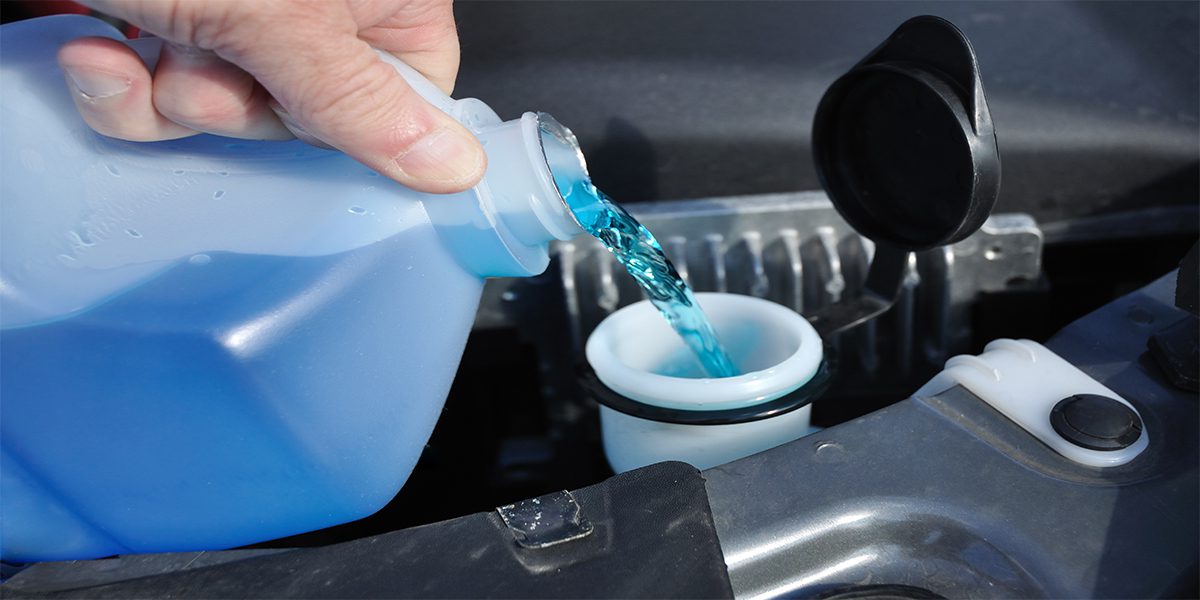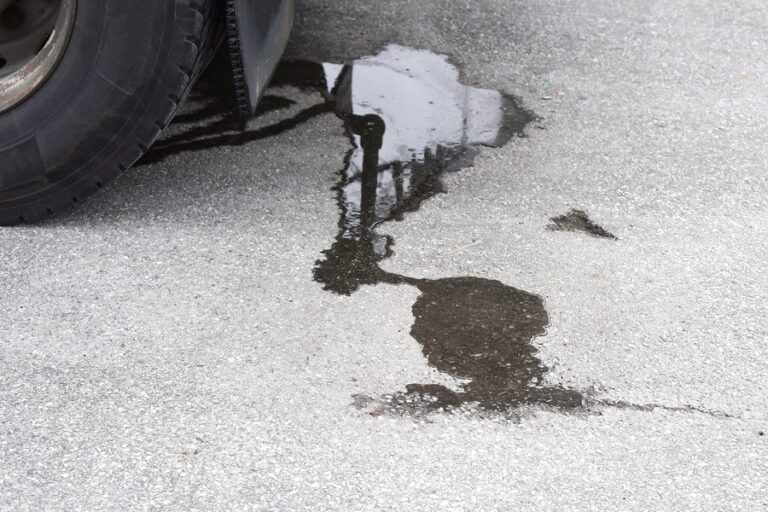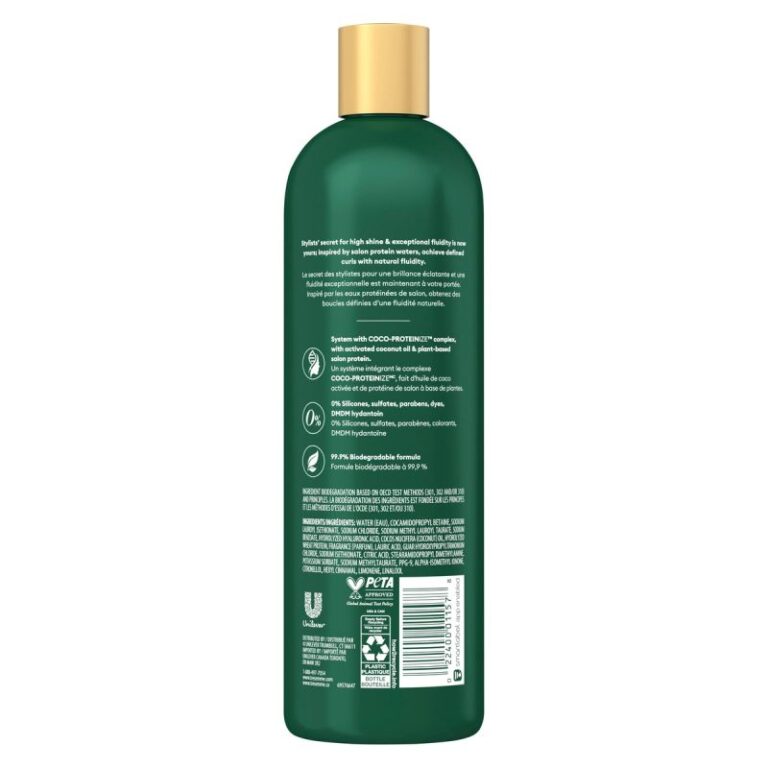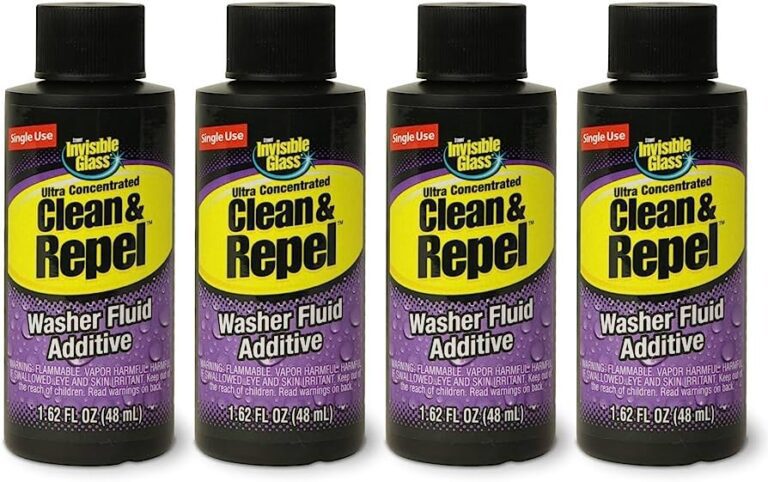Revamp Your Car’s Cleaning: Windshield Washer Fluid Replacement
To replace windshield washer fluid, locate the washer fluid reservoir and remove the cap. Fill the reservoir with the appropriate fluid and replace the cap.
Windshield washer fluid replacement is an essential maintenance task capable of maintaining maximum visibility during poor weather conditions. During driving, windshields can become dirty or wet and require cleaning. When drivers use the washers, the fluid injects onto the screen, enabling wipers to do their job.
The washer fluid breaks down grime build-up and clears the driver’s field of vision. To ensure a successful and easy windshield washer fluid replacement, drivers must locate the washer fluid reservoir and remove the cap. They can then add the same fluid the vehicle currently uses and replace the cap before verifying the fluid’s operation by testing the system.

Credit: www.firestonecompleteautocare.com
Why It Is Important To Replace Windshield Washer Fluid Regularly
Highlight The Importance Of Windshield Washer Fluid In Maintaining Vehicle Safety
Maintaining a car is essential to ensure its safe operation, and that includes regularly replacing the windshield washer fluid. Windshield washer fluid plays a significant role in maintaining vehicle safety since it is used to clean off dirt, grime, and other debris from the windshield, enabling drivers to see the road more clearly.
It is, therefore, essential to keep the reservoir filled with good quality washer fluid and replace it regularly to guarantee clear visibility even in the worst weather conditions.
Explain How Dirty Or Inadequate Washer Fluid Can Cause Accidents
Using dirty or inadequate washer fluid can lead to severe consequences, such as reduced visibility, which can lead to accidents. Water or inferior quality fluid does not have the right chemicals, such as methanol, to help clean the windshield efficiently.
Thus, wiper blades may smear grime on the windshield, affecting visibility and causing distractions, which may result in fatal accidents. Additionally, if the washer fluid is not replenished regularly, the residue left on the windshield can damage the glass, interfering with the driver’s line of sight and posing a significant safety risk.
Link To Benefits Of Regular Maintenance Of The Car
Regular maintenance of a car, including replacing windshield washer fluid, has several benefits, including:
- Enhanced safety: Using clean, high-quality washer fluid and ensuring the reservoir is adequately filled enables drivers to see better, enhancing safety on the road.
- Cost savings: Regular maintenance of a car can ensure that small issues are addressed before they escalate into more significant problems, leading to higher repair costs.
- Improved fuel economy: A poorly maintained car affects fuel consumption, while regular maintenance tunes up the engine and ensures that everything is working correctly, leading to better fuel economy and reduced emissions.
- Higher resale value: Regular maintenance, such as replacing the windshield washer fluid, can prolong the car’s lifespan, ensuring that it has a higher resale value.
As a responsible car owner, replacing the windshield washer fluid is essential, not just to ensure clear visibility on the road, but also to enhance safety, cut costs, improve fuel economy, and boost resale value. Regular maintenance, including replacing fluids, ensures that your vehicle lasts longer and operates more efficiently, reducing the risks of costly repairs and accidents.
How To Identify When Windshield Washer Fluid Needs Replacement
Windshield washer fluid replacement: how to identify when windshield washer fluid needs replacement
As someone who drives a car on a regular basis, how frustrating is it to hit the windshield washer fluid spray and hear the sound of a dry pump? It happens to the best of us but replacing the fluid is quick and simple.
Here are some handy tips to help you identify when your windshield washer fluid needs replacement.
Some Signs That Indicate Windshield Washer Fluid Needs To Be Replaced
Is your windshield washer fluid running low? Can you remember the last time you replaced it? If the answer is no, it might be time to take a closer look. There are many signs that indicate it’s time for a replacement.
Here are some common ones:
- The washer fluid is coming out in a smaller amount or not at all.
- The liquid coming out of the nozzle is a murky, brownish color.
- When you activate the washer fluid spray, the nozzle produces peculiar sounds indicating a lack of fluid.
- Nozzle spray is uneven or doesn’t cover the entire windshield.
- You notice a strange smell or impurities in the fluid.
If you’ve noticed any of these symptoms, it’s time to get that windshield washer fluid replaced quickly to avoid road dangers and potential safety hazards.
The Frequency Of Changing Windshield Washer Fluid
The frequency of replacing your windshield washer fluid will depend on a number of factors such as weather conditions, driving habits, and how much you use your windshield washer system.
As a general rule of thumb, we suggest replacing your fluid every three months. Regular use obviously means the fluid will get depleted more quickly, so keep an eye on the fluid levels and replace fluid as often as needed.
As with all car maintenance tasks, it’s better to err on the side of caution. Always check the fluid and top it up regularly to keep your windshield clean and avoid running low.
By following these simple steps, you can ensure that your car’s windshield doesn’t compromise your view of the road. Go ahead and replace your fluid today for a clear view of the road, every time.
Diy Steps For Replacing Windshield Washer Fluid
Windshield washer fluid is an essential component for safe driving. It helps clear away dirt, grime, and debris from your windshield, making it easier to see the road ahead. If your windshield washer fluid is running low or is not working properly, it’s time to replace it.
Here are the diy steps for replacing windshield washer fluid to ensure maximum visibility while on the road.
Materials Required For Car Windshield Washer Fluid Replacement
Before starting the replacement process, gather the following materials:
- New windshield washer fluid
- Funnel
- Clean rag
Step-By-Step Guide For Replacing Windshield Washer Fluid
- Locate the washer fluid reservoir under the hood of your car. The reservoir will have a cap that is marked with a windshield wiper symbol.
- Remove the cap and use a clean rag to wipe the residue from around the opening.
- Using a funnel, pour the new washer fluid into the reservoir. Be sure not to overfill the reservoir.
- Once you have filled the reservoir, replace the cap.
- Check the washer fluid level to make sure it’s at the recommended level. You can do this by pulling the windshield wiper lever toward you.
- Test the washer fluid to make sure it works correctly. If it doesn’t work, investigate the wiper fluid pump or any clogs in the hoses.
Replacing your windshield washer fluid is a simple task that can be done at home with minimal tools. Following these steps will ensure that you have a clean windshield while driving, improving your overall safety on the road. Remember to check your washer fluid level regularly and never let it run dry.
Stay safe, and happy driving!
Step 1: Locate The Reservoir Of The Windshield Washer Fluid
Detailed Explanation On What The Reservoir Is And How To Locate It
Before starting with replacing the windshield washer fluid, it is important to locate the windshield washer fluid reservoir. Here are some key points to help you with it:
- The windshield washer fluid reservoir is a translucent plastic container located under the hood near the windshield.
- It has a cap with a windshield wiper icon on top of it that can easily be identified.
- In some car models, the reservoir can be found on one side or the other depending on the manufacturer.
Steps To Locate The Reservoir Of The Windshield Washer Fluid
Following these steps will make it easier for you to locate the reservoir of the windshield washer fluid:
- Open the car’s hood and prop it up safely.
- Look for the location of the windshield washer fluid reservoir. It can be tricky sometimes, so look for the cap with a windshield wiper icon on top of it.
- Some car models have the reservoir on the driver’s side, while others have it on the passenger’s side. Check on both sides of the hood if needed.
- Reach out to the container and ensure that it is the right one. You can identify the container by reading the label that says “windshield washer fluid” on it.
Keep in mind that once you locate the reservoir of the windshield washer fluid, the next step is to remove the cap of the container and replace the fluid. We’ll cover that in our next section.
Remember to always check the owner’s manual of your vehicle for specific instructions to locate the windshield washer fluid reservoir. With this simple step, you can prevent unnecessary damages to your car’s components and keep your windshield clean and safe.
Step 2: Drain The Old Windshield Washer Fluid
Replacing your windshield washer fluid is an important maintenance task to ensure that your wipers work effectively. If your fluid looks dirty, it’s time to replace it. Here’s a guide on how to replace the windshield wiper fluid in your car.
Detailed Explanation On How To Drain Out The Old Windshield Washer Fluid
Before adding new windshield washer fluid, you need to drain out the old fluid from your car.
Step 1: Locate The Reservoir
The windshield washer fluid reservoir is typically located under the hood of your car. Check your car’s manual for the exact location.
Step 2: Disconnect The Old Fluid Hose
Find the hose that connects to the bottom of the windshield washer fluid reservoir. Disconnect it by gently pressing the release tab and pulling the hose away.
Step 3: Drain The Fluid
Once the hose is detached, position it so that it is pointed towards the empty container. Gently press the reservoir to release the old fluid. Make sure that all of the fluid has been drained out.
Step 4: Reconnect The Hose
Once the fluid has been completely drained, reattach the hose to the bottom of the reservoir. Snap it back into place and secure it with the release tab.
Step 5: Add New Fluid
Now that the old fluid has been drained, it’s time to add new windshield washer fluid to your car. Fill the reservoir with the recommended amount of fluid, which can be found in your car’s manual.
By following these simple steps, you can easily replace the old windshield washer fluid in your car. Remember to replace the fluid regularly to ensure that your wipers are functioning properly.
Step 3: Clean The Reservoir
Highlight The Importance Of Cleaning The Reservoir Before Adding New Fluid
After you’ve removed the old windshield wiper fluid, the next step you need to take is to clean the reservoir. Many car owners tend to skip this important step, but cleaning the reservoir is crucial for your safety on the road.
Here’s why:
- Dirt, debris, and contaminants can accumulate in the reservoir over time, which can contaminate the new fluid you add. Contaminated fluid can damage your windshield wipers and decrease their effectiveness, posing a safety hazard.
- Old, stagnant fluid can harbor bacteria and fungi, which can cause foul odors and even respiratory problems if inhaled. Cleaning the reservoir eliminates any potential health risks.
Detailed Explanation On How To Clean The Reservoir
Cleaning the reservoir is a simple task that you can complete in just a few minutes. Here’s what you need to do:
- Locate the reservoir: The windshield washer fluid reservoir is usually located under the hood on the driver’s side of the car. It’s a plastic jug with a cap.
- Drain the reservoir: Remove the cap of the reservoir and let the old fluid drain out completely. You may need to use a funnel to avoid creating a mess.
- Remove the debris: Check for any debris, dirt, or insects that may have fallen into the reservoir. Remove any dirt or debris with a clean cloth or paper towel.
- Clean the reservoir: Fill the reservoir with water and add a few drops of liquid soap. Use a long-handle brush or a soft-bristle brush to scrub the interior of the reservoir gently. Be sure to remove any remaining dirt and grime.
- Rinse the reservoir: Drain the soapy water and rinse the reservoir thoroughly with clean water. Make sure to remove all soap suds.
- Dry the reservoir: Allow the reservoir to air-dry completely before refilling it with windshield wiper fluid.
Remember to clean the reservoir periodically, especially if your car has been sitting unused for an extended period. A clean windshield washer fluid reservoir ensures that you can see clearly when driving, eliminating any potential safety hazards.
Step 4: Adding New Windshield Washer Fluid
Discussion On How To Add The New Fluid To The Reservoir
Now that you have successfully removed the old fluid and cleaned the windshield washer reservoir, it’s time to add in the new windshield washer fluid. Follow these steps to complete the process:
- Locate the windshield washer fluid cap on top of the reservoir. It will likely have a windshield symbol on it.
- Remove the cap and set it aside. Be careful not to lose it.
- Pour the recommended type of windshield washer fluid into the reservoir. It is important to use the right type of fluid for your vehicle, so refer to your owner’s manual or consult with a professional if you are unsure.
- The most commonly recommended type of windshield washer fluid is an all-season formula with antifreeze capabilities.
- Avoid using water or other types of fluid, as they can cause damage to your vehicle’s windshield washer system.
- Fill the reservoir until it reaches the fill line. Be careful not to overfill, as this can cause the fluid to leak.
- Once you have finished pouring in the new fluid, securely reattach the cap onto the reservoir.
- Test your windshield washer system by pressing the lever to ensure the fluid is spraying correctly onto the windshield.
Replacing your windshield washer fluid is an important part of maintaining your vehicle and ensuring clear visibility while driving. By following these simple steps, you’ll have a clean and effective windshield washer system in no time.
Step 5: Test The New Windshield Washer Fluid
Detailed Explanation On How To Test The New Fluid
After replacing your windshield washer fluid, it is always essential to verify that it is working efficiently. Testing the new windshield washer fluid is a simple process that you can do in just a few steps.
First, turn your car on and activate the windshield wipers. Then, spray the new washer fluid for about 5-10 seconds. Observe whether the fluid is adequately sprayed on the windshield surface.
If the fluid is not correctly sprayed, follow the steps below to troubleshoot the problem:
- Check the windshield washer nozzles: Ensure that the nozzles are clean and free of any clogs. If they are clogged, use a needle to clean and remove any dirt or debris.
- Check the washer fluid pump: If the pump is damaged or malfunctioning, the fluid may not spray appropriately. You can consult a mechanic to offer professional repair services.
If the fluid is working correctly, proceed to wait for a few seconds to see whether there is any fluid residue, and then use a clean cloth to wipe the windshield thoroughly.
How To Test The Effectiveness Of The New Windshield Washer Fluid
After verifying that the washer fluid is appropriately spraying on your car’s windshield, now it’s time to examine the efficiency of the new fluid. There are two primary ways to test the efficacy of the new windshield washer fluid.
- Check the cleansing power:
One of the roles of the washer fluid is to clean grime, debris, and dirt on the windshield surface. Spray the washer fluid again for five seconds, and if you notice that the dirt is still on the windshield, it’s time to consider changing the washer fluid.
- Observe the antifreeze ability:
The new washer fluid should also be capable of preventing ice formation on the windshield during cold seasons. To verify this, gently pour some of the fluid on an ice block until it melts. If the ice melts quickly, then the new windshield washer fluid is effective.
Remember, testing your new windshield washer fluid is paramount to ensure that it is working efficiently. If you encounter any issues while testing, don’t hesitate to seek assistance from an expert mechanic.
Precautionary Measures
Windshield Washer Fluid Replacement: Precautionary Measures
Without proper maintenance, your car’s windshield washer system can malfunction, resulting in a dirty and obstructed view. Windshield washer fluid replacement is a straightforward task that you can perform yourself. But before proceeding, it’s essential to take some precautions to avoid damaging your vehicle’s electrical system or causing any mishaps.
Safety First
Before starting, ensure that your car is on a level surface and parked securely. You will also need to gather the necessary materials, such as gloves, a funnel, and a container to collect the used washer fluid.
Turn Off The Car
It’s crucial to switch off the engine before replacing the washer fluid. Once the engine is off, make sure that the car is secure and in neutral with the handbrake on. Avoid changing the fluid when the engine is still running as this can cause electrical damage and other hazards.
Protect Your Eyes
Always wear gloves when handling the washer fluid. This will not only protect your hands but also reduce the risk of washer fluid getting in your eyes. If the fluid does come in contact with your eyes, flush them out with water immediately.
Locate The Washer Fluid Reservoir
Before replacing the washer fluid, make sure you know the location of the reservoir. The reservoir is usually transparent and located in the engine compartment or near the windshield. Refer to the car manual if unsure.
Drain Old Fluid
Once you’ve located the reservoir, drain any remaining fluid using a hand pump or by carefully removing the rubber plug underneath. Collect the old fluid in a container and dispose of it according to local regulations.
Fill The Reservoir
After emptying the used washer fluid, fill the reservoir with the new fluid using a funnel. Do not overfill as this can cause leaks and other issues.
Test The Washer System
After adding the new fluid, test the windshield washer system to ensure that it’s working correctly. This will help you detect any problems before hitting the road.
Recap And Dispose
After replacing the fluid, recap the reservoir and dispose of the used fluid correctly. Be careful not to spill or leave it exposed.
Regular Maintenance
To avoid frequent washer fluid replacement, it’s advisable to perform regular maintenance on your car, such as checking for any leakages or blockages.
Taking precautionary measures when replacing washer fluid not only safeguards your car’s electrical system but also ensures your safety. Always remember to switch off the engine, wear gloves, and drain the old fluid before adding new fluid. By following these simple precautions, you’ll be able to perform the task successfully and avoid any mishaps.
Frequently Asked Questions For Windshield Washer Fluid Replacement
How Often Should I Replace My Windshield Washer Fluid?
It is recommended to replace your windshield washer fluid every six months or as needed when it runs out or starts to become dirty. Checking it regularly and topping it off as needed can also keep your windshield clean and clear.
Can I Use Regular Water Instead Of Windshield Washer Fluid?
No, it is not recommended to use regular water instead of windshield washer fluid. Windshield washer fluid contains special additives that help clear dirt, grime, and bugs from your windshield. Regular water can leave mineral deposits that impair visibility and can cause damage.
How Do I Know If My Windshield Washer Fluid Reservoir Is Low?
You can check the level of your windshield washer fluid by locating the reservoir under the hood of your vehicle. The reservoir will have a fill line marked on it and you can visually see if the fluid is low.
Additionally, your vehicle may have a dashboard warning light indicating the fluid is low.
What Type Of Windshield Washer Fluid Should I Use?
The type of windshield washer fluid you should use depends on your climate and driving conditions. If you live in an area with colder temperatures, you should use a winter-rated windshield washer fluid that can handle freezing temperatures. For regular conditions, an all-season or summer-rated windshield washer fluid is sufficient.
How Do I Refill My Windshield Washer Fluid Reservoir?
To refill your windshield washer fluid reservoir, locate the cap for the reservoir under the hood of your vehicle. Remove the cap and pour in the appropriate type of windshield washer fluid up to the fill line. Replace the cap and ensure it is securely in place.
Conclusion
After reading this article, it’s pretty clear that replacing your windshield washer fluid is an easy and essential item on your calendar to keep your car in tip-top shape. Whether it’s just low or entirely depleted, make sure to replace it as soon as possible.
Use a variety of cleaning strategies and maintenance techniques to keep your windshield clear and clean, including double-checking brand compatibility and carefully pouring in a new washer fluid blend. With these simple steps, you can avoid costly repairs and extend the life of your wiper system, ensuring a safer, clearer, and cleaner driving experience.
Don’t let damaged windshield wipers cause dangerous accidents or roadblocks – take control and get them replaced today.






